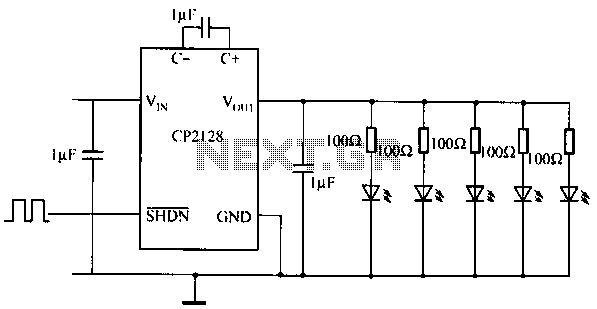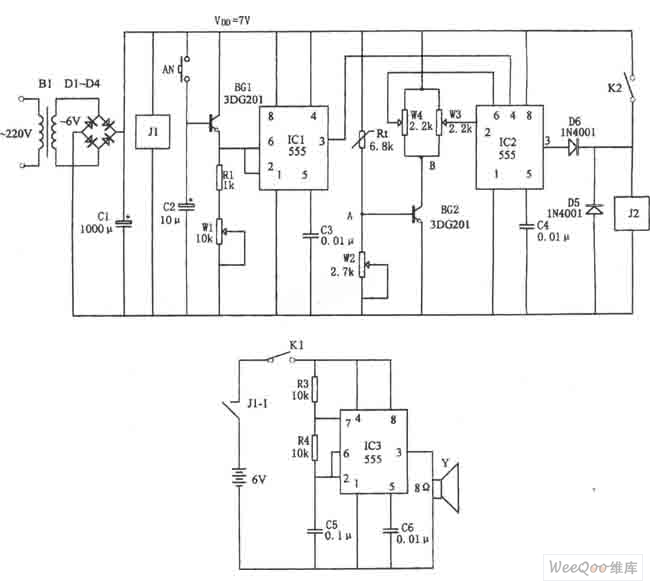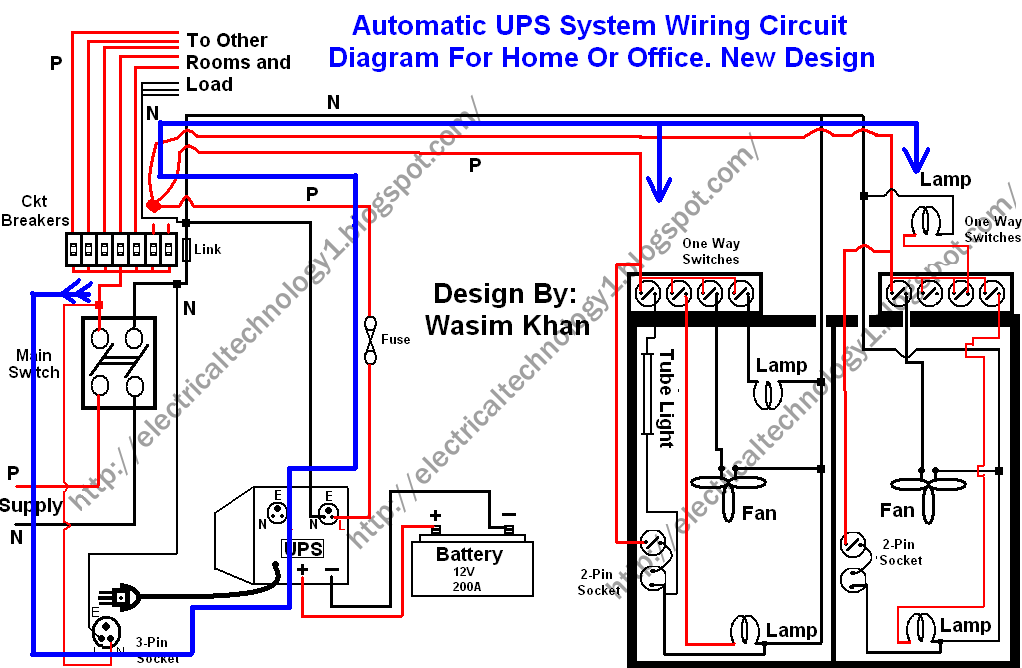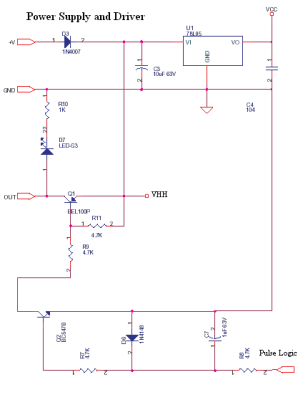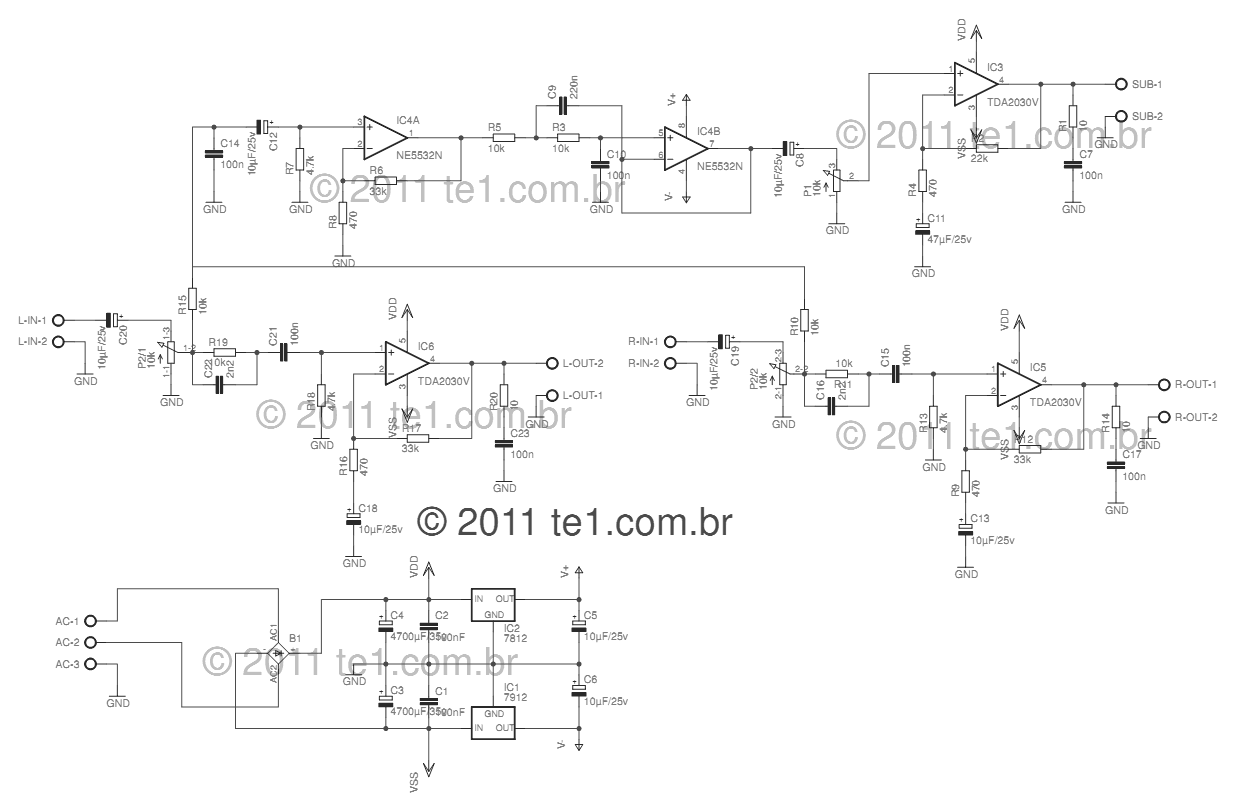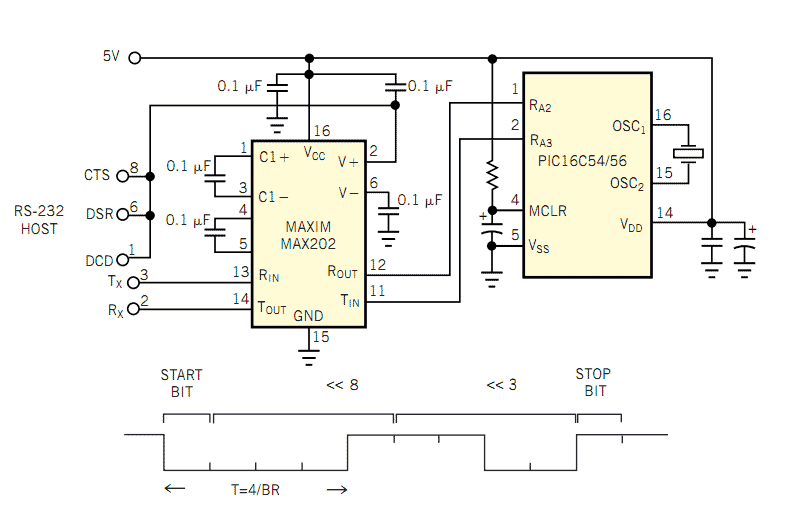
Automatic telephone call recording circuit
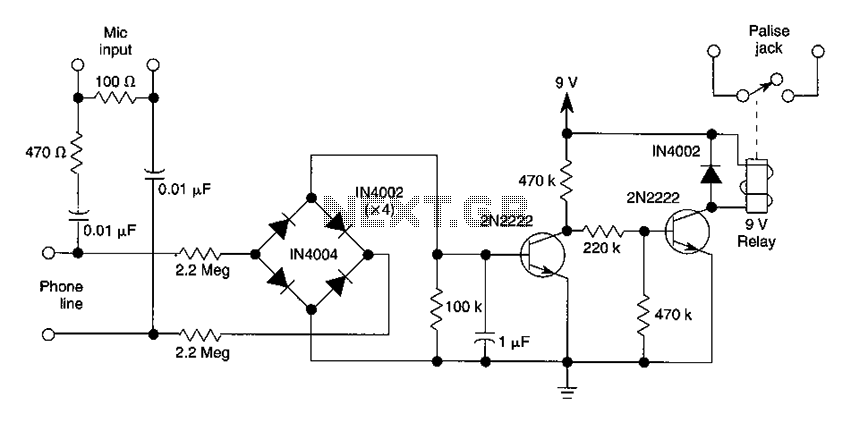
The DC voltage present on the telephone line typically ranges from 45 to 50V when on-hook and drops to approximately 6V when off-hook. This condition activates a step-down circuit relay, which in turn controls a tape recorder. Audio input is routed through the network to record from the microphone.
The described circuit operates by utilizing the DC voltage levels present on a telephone line to control a relay. The relay serves as a switch that activates a step-down converter, which reduces the high voltage from the telephone line to a lower, manageable level suitable for powering additional devices, such as a tape recorder.
When the telephone is in the on-hook state, the line voltage remains high, typically between 45 to 50 volts. In this state, the relay is deactivated, preventing any current flow to the tape recorder. Once the telephone is taken off-hook, the voltage drops to around 6 volts, which activates the relay. This transition is crucial as it signals the system to switch from standby mode to operational mode.
The relay, upon activation, connects the tape recorder to the audio input from the telephone line. The audio signal, which can be derived from the microphone or directly from the telephone line, is then processed and recorded by the tape recorder. This setup allows for efficient recording of conversations or audio signals transmitted over the phone line.
The circuit design may include additional components such as diodes for protection against voltage spikes, capacitors for filtering noise, and resistors to limit current where necessary. Properly sizing these components is essential to ensure reliable operation and to prevent damage to the tape recorder or other connected devices. The overall schematic should allow for easy integration with existing telephone systems while maintaining compliance with safety standards.DC voltage present on the telephone line is usually about 45 to 50V, on-hook and off-hook to 6V. The step-down circuit relay is activated. Relay control tape recorder. Audio is input through the network to tape the microphone.
The described circuit operates by utilizing the DC voltage levels present on a telephone line to control a relay. The relay serves as a switch that activates a step-down converter, which reduces the high voltage from the telephone line to a lower, manageable level suitable for powering additional devices, such as a tape recorder.
When the telephone is in the on-hook state, the line voltage remains high, typically between 45 to 50 volts. In this state, the relay is deactivated, preventing any current flow to the tape recorder. Once the telephone is taken off-hook, the voltage drops to around 6 volts, which activates the relay. This transition is crucial as it signals the system to switch from standby mode to operational mode.
The relay, upon activation, connects the tape recorder to the audio input from the telephone line. The audio signal, which can be derived from the microphone or directly from the telephone line, is then processed and recorded by the tape recorder. This setup allows for efficient recording of conversations or audio signals transmitted over the phone line.
The circuit design may include additional components such as diodes for protection against voltage spikes, capacitors for filtering noise, and resistors to limit current where necessary. Properly sizing these components is essential to ensure reliable operation and to prevent damage to the tape recorder or other connected devices. The overall schematic should allow for easy integration with existing telephone systems while maintaining compliance with safety standards.DC voltage present on the telephone line is usually about 45 to 50V, on-hook and off-hook to 6V. The step-down circuit relay is activated. Relay control tape recorder. Audio is input through the network to tape the microphone.
